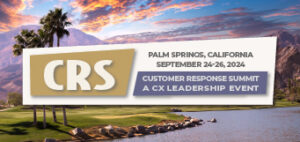The following is a guest post written by Jennifer MacIntosh, VP of Customer Experience at Coveo
“The best-laid plans of mice and men often go awry.” – Robert Burns, “To a Mouse”
CX leaders today know this all too well. In today’s business environment, I often hear that the only constant is change. Our customers are rapidly changing and shifting their demands for their support experience. With every new graduating class of the workforce, our employees are coming in with their own set of needs for their experience. The leadership team analyzes and recognizes new threats and brings in their own set of expectations.
How do you actually accomplish your strategic initiatives for transformation when everything is constantly shifting?
The answer: Adaptive Change.
What is Adaptive Change and Why Does It Matter
Ron Runyon, VP – Support Delivery at F5, described adaptive change as still being able to climb a mountain – even when the weather conditions are foggy and you can’t see the summit.
He shared their own story of adaptive change in the midst of a sweeping business transformation in the video below.
Adaptive change, or “change that requires new learning for problem definition and solution implementation” according to change theorist Ronald A. Heifetz, is critical for today’s support leaders as they face what can feel like insurmountable challenges in a rapidly changing business environment. As opposed to “technical change,” the responsibility for the solution resides with the followers, not the leader or expert. In one of the seminal papers on the subject, researchers identified six guiding principles for adaptive change.
1. “Get on the balcony.”
This is not the time to be in the weeds – it’s a time to get a view from above where you can identify patterns and resolve issues. Common reactions to change are work avoidance and power struggles, but if you’re right alongside the team, you won’t be able to spot them.
2. Identify the real challenge
Don’t shy away from examining your people, your structures and everything in between as your organization adjusts to the adaptive challenge. What is stopping your organization from adapting to changes quickly?
3. Keep tabs on stress
These sweeping changes generate stress and too much will debilitate your workforce. Regulate stress by reassuring employees and helping them identify their own issues with change.
4. Maintain disciplined attention
Be open to contrasting opinions and perspectives. Every change will bring out its own issues and it’s important to create an environment where issues can be openly discussed and resolved.
5. Empower your workers
Don’t let senior managers shoulder the responsibility for responding to swift market changes or customer expectations – the decision to act rests on all. Give every worker the responsibility and ability to make the decisions that they see fit. Don’t let bad habits of work avoidance in the face of change translate to responsibility avoidance.
6. Facilitate open communication
Recognize that in these situations, the dissenting opinions are often silenced or without a proper venue, brought up at the wrong times.
Other Theories of Change Management
I am a Prosci-certified change management professional. Their methodology follows a different approach, focusing heavily on the people side of change management. To drive change in your organization, you should follow ADKAR:
A – Awareness of the need to change. During this stage, your goal is to help your audience see the light of why the change is needed. Enlighten and inform them of the current state to motivate them when to embrace the change.
D – Desire to support the change. This is your time to create some hype for the changes you’ll be implementing. Think of this as your marketing campaign to your stakeholders and larger audience.
K – Knowledge of how to change. Even with the most exciting rollout of your changes and the motivation to change at full force, without the knowledge of how to change, your changes will fall flat.
A – Ability to demonstrate skills and behaviors. In practice, I can walk you through how to yodel. You can even memorize the instructions so well that you can repeat them back to me. But will you actually know how to yodel and be comfortable doing it in front of an audience? No. Hands-on facilitation is needed at this stage to avoid costly errors later on.
R – Reinforcement to make the changes stick. Change is an ongoing process, and your changes and strategy will evolve. This stage is where you ensure your changes still work for your organization and maintain consistency with your changes.
How do you handle change in the face of transformation?
Expect to hear answers to this question during my panel with leaders from Nordstrom, F5 Networks and Uber at Customer Response Summit, in Denver, on September 17. We’ll discuss ways and initiatives to improve service, personalization and insight using AI – definitely an adaptive change challenge for many organizations!


